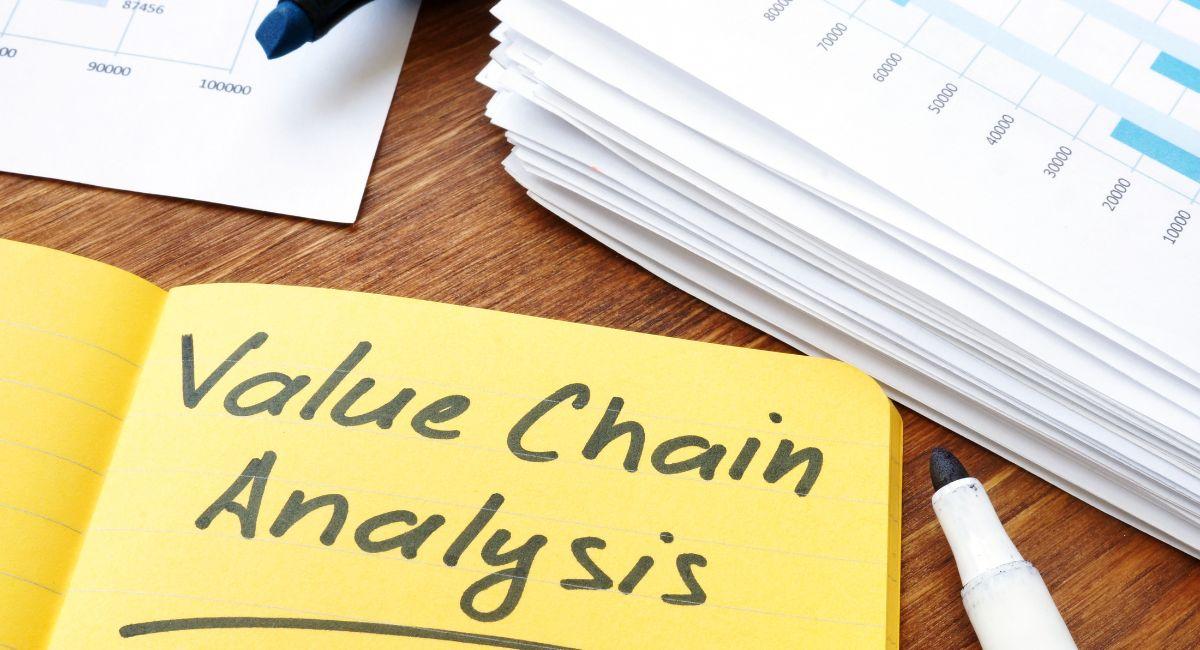Cryptocurrencies, with their decentralized nature and transparency, provide a wealth of data accessible through the blockchain. On-chain analysis, a method of examining these on-chain transactions and data, has become a crucial tool for gaining insights into the behavior of cryptocurrencies. In this exploration, we will delve into the concept of on-chain analysis, its significance, and how it is utilized in the crypto space.
Defining On-Chain Analysis
On-chain analysis involves scrutinizing the transactional data recorded on the blockchain to extract valuable insights. Unlike off-chain analysis, which focuses on external market factors, on-chain analysis leverages the inherent transparency of blockchain ledgers. By examining transaction histories, wallet movements, and other on-chain data points, analysts can uncover patterns, trends, and potential indicators of market sentiment.
The Significance of On-Chain Analysis

On-chain analysis is a method of studying and interpreting data directly from a blockchain to gain insights into the behavior of cryptocurrencies and their users. This type of analysis provides valuable information about transactions, wallet movements, and overall network activities. The significance of on-chain analysis in the crypto space is multifaceted:
- Transaction Transparency:
- Traceability: On-chain analysis allows for the tracking and tracing of individual transactions. Every movement of cryptocurrency on the blockchain is recorded and visible, providing transparency that is crucial for understanding fund flows and identifying potential patterns.
- Market and Investor Behavior:
- Whale Activity: Large transactions, often referred to as whale activity, can be identified through on-chain analysis. Monitoring the movements of significant holders provides insights into the behavior of major investors and can sometimes serve as an early indicator of market sentiment.
- Supply Dynamics:
- Token Metrics: On-chain data reveals information about token distribution, circulating supply, and changes in the total supply. This is particularly important for understanding the economic model of a cryptocurrency, evaluating its scarcity, and assessing potential impacts on value.
- Smart Contract Execution:
- Smart Contract Activity: On-chain analysis extends beyond simple transactions to include the execution of smart contracts. This allows analysts to study decentralized applications (DApps), token swaps, and other functionalities within the blockchain ecosystem.
- Security and Anomaly Detection:
- Security Monitoring: On-chain analysis plays a vital role in detecting unusual activities and potential security threats. Suspicious transactions, anomalies in wallet behavior, and other irregularities can be identified, helping to enhance the overall security of blockchain networks.
- Token Movements and Exchanges:
- Exchange Flows: Analyzing on-chain data can reveal the movement of tokens to and from exchanges. This information is critical for understanding liquidity, potential sell-offs or accumulation, and the overall sentiment of traders.
- Network Health and Adoption:
- User Activity: On-chain analysis provides insights into the number of active addresses, transaction frequency, and user engagement. This information is valuable for assessing the health of a blockchain network, its adoption rate, and the level of user activity.
- Governance and Voting:
- Governance Activities: For blockchain networks with governance mechanisms, on-chain analysis helps track voting activities and decisions made by token holders. This is crucial for understanding the decentralized decision-making process within the ecosystem.
- Compliance and Regulation:
- Transaction Monitoring: On-chain analysis tools are increasingly used by regulatory authorities to monitor and ensure compliance with financial regulations. The transparent nature of blockchain transactions allows for enhanced regulatory oversight.
In summary, on-chain analysis is significant in the cryptocurrency space as it provides a wealth of information crucial for understanding market dynamics, investor behavior, network health, and overall blockchain activity. Analysts, traders, investors, and regulators use on-chain data to make informed decisions and gain deeper insights into the rapidly evolving world of cryptocurrencies.
Also, read- Cryptocurrency Trading: Benefits, Loss, How To Do And Protection Tips
How Crypto On-Chain Analysis is Utilized
 Crypto On-Chain Analysis is a valuable tool utilized by various stakeholders, including analysts, traders, investors, and blockchain projects, to gain insights into the behavior and dynamics of cryptocurrencies. Here are several ways in which On-Chain Analysis is employed:
Crypto On-Chain Analysis is a valuable tool utilized by various stakeholders, including analysts, traders, investors, and blockchain projects, to gain insights into the behavior and dynamics of cryptocurrencies. Here are several ways in which On-Chain Analysis is employed:
- Market Sentiment Analysis:
- Analysts use on-chain data to gauge market sentiment. Large transactions, wallet movements, and changes in token holdings can provide early indicators of bullish or bearish trends.
- Whale Watching:
- Traders and investors closely monitor the activities of large holders, often referred to as whales. On-chain analysis helps identify significant movements of funds, potentially signaling market trends or significant shifts in sentiment.
- Token Metrics and Supply Analysis:
- On-chain analysis provides data on token distribution, circulating supply, and changes in total supply. This information is crucial for evaluating the economic model of a cryptocurrency and assessing factors like scarcity and inflation.
- Smart Contract Monitoring:
- Analysts study the execution of smart contracts to understand the activities within decentralized applications (DApps) and the broader ecosystem. This is particularly relevant for platforms supporting smart contract functionality.
- Security and Anomaly Detection:
- On-chain analysis is employed to detect unusual activities or potential security threats. Anomalies in transactions or wallet behavior can be identified, helping enhance the overall security of blockchain networks.
- Exchange Flow Analysis:
- Traders and analysts use on-chain data to track token movements to and from exchanges. This information is valuable for understanding liquidity, predicting potential market movements, and assessing the behavior of market participants.
- User Engagement and Adoption Metrics:
- On-chain analysis provides insights into the number of active addresses, transaction frequency, and overall user engagement. These metrics are crucial for assessing the health of a blockchain network and its level of adoption.
- Governance Monitoring:
- On-chain analysis tools are employed to monitor governance activities within blockchain networks that have decentralized decision-making processes. This includes tracking voting patterns and outcomes.
- Compliance and Regulatory Oversight:
- Regulatory authorities use on-chain analysis to monitor transactions and ensure compliance with financial regulations. The transparent nature of blockchain transactions allows for enhanced regulatory oversight.
- Project Fundamentals:
- Blockchain projects use on-chain analysis to assess the health and fundamentals of their ecosystems. This includes evaluating token distribution, network activity, and the success of implemented features.
- Research and Due Diligence:
- Investors and analysts conduct on-chain analysis as part of their research and due diligence processes when evaluating potential investment opportunities. Understanding the underlying blockchain data helps in making informed decisions.
- Trend Identification:
- On-chain analysis is used to identify trends such as token accumulation, distribution patterns, and changes in wallet behavior. This information aids in making strategic decisions in a dynamic market.
Overall, On-Chain Analysis is a versatile tool that provides a comprehensive view of blockchain activities. Its applications range from market sentiment analysis to security monitoring, offering valuable insights for various stakeholders in the cryptocurrency space.
Tools for crypto On-Chain Analysis
 There are several tools and platforms specifically designed for conducting On-Chain Analysis in the cryptocurrency space. These tools provide various features and metrics to analyze blockchain data, monitor transactions, and gain insights into market dynamics. Here are some popular tools for crypto On-Chain Analysis:
There are several tools and platforms specifically designed for conducting On-Chain Analysis in the cryptocurrency space. These tools provide various features and metrics to analyze blockchain data, monitor transactions, and gain insights into market dynamics. Here are some popular tools for crypto On-Chain Analysis:
- Blockchain Explorers:
- Etherscan (for Ethereum): Etherscan is a popular Ethereum blockchain explorer that allows users to explore and analyze transactions, addresses, and smart contracts on the Ethereum network.
- Blockchain.info (for Bitcoin): Blockchain.info is a widely used Bitcoin blockchain explorer. It provides information about transactions, blocks, and wallet addresses on the Bitcoin network.
- On-Chain Analytics Platforms:
- Glassnode: Glassnode offers on-chain analytics and market intelligence for various cryptocurrencies. It provides insights into network metrics, market indicators, and addresses the behavior of market participants.
- IntoTheBlock: IntoTheBlock provides on-chain analytics for multiple cryptocurrencies. It offers a range of metrics, including concentration, order book analysis, and token flows.
- CoinMetrics: CoinMetrics offers a suite of on-chain data analytics tools. It provides data on various cryptocurrencies and allows users to explore network metrics, supply data, and market indicators.
- Token-Specific Analytics:
- Dune Analytics: Dune Analytics is a platform for exploring and creating dashboards for Ethereum smart contract data. Users can analyze on-chain data related to DeFi protocols, token movements, and more.
- Whale Watching Platforms:
- Whale Alert: Whale Alert tracks large transactions across various blockchains, including Ethereum, Bitcoin, and others. It provides real-time alerts for significant movements of funds.
- WhaleStats: WhaleStats is another platform that tracks whale activities on various blockchains. It provides information about large transactions and wallet movements.
- Exchange Analytics:
- TokenAnalyst: TokenAnalyst focuses on analyzing on-chain data related to cryptocurrency exchanges. It provides insights into fund flows, transaction volumes, and liquidity metrics.
- Santiment: Santiment offers on-chain and social media analytics for cryptocurrencies. It provides data on wallet movements, token distribution, and market sentiment.
- Research Platforms:
- CoinGecko: CoinGecko is a cryptocurrency data aggregator that provides on-chain metrics alongside market data. It includes information on network activity, developer metrics, and more.
- CoinMarketCap: CoinMarketCap includes on-chain data metrics alongside traditional market data. It offers insights into market cap, trading volume, and on-chain statistics for various cryptocurrencies.
These tools cater to different aspects of On-Chain Analysis, allowing users to explore blockchain data, track transactions, and gain insights into the behavior of market participants. Depending on the specific needs and preferences, users may choose different tools for conducting comprehensive On-Chain Analysis in the crypto space.
Risks and Challenges of On-Chain Analysis
 While On-Chain Analysis provides valuable insights into the behavior of cryptocurrencies and their users, there are several risks and challenges associated with this approach. It’s essential to be aware of these factors when relying on On-Chain Analysis for decision-making in the crypto space:
While On-Chain Analysis provides valuable insights into the behavior of cryptocurrencies and their users, there are several risks and challenges associated with this approach. It’s essential to be aware of these factors when relying on On-Chain Analysis for decision-making in the crypto space:
- Privacy Concerns:
- On-chain transactions are transparent and traceable, raising privacy concerns. Analyzing on-chain data can reveal sensitive information about individuals, potentially compromising user privacy. This privacy risk has led to the development of privacy-focused cryptocurrencies and technologies.
- Limited Context:
- On-Chain Analysis provides data about transactions, wallet movements, and token flows, but it often lacks context. Without additional information, it can be challenging to interpret the motivations behind specific actions, making it susceptible to misinterpretation.
- Whale Manipulation:
- Large holders, or “whales,” can intentionally manipulate the market by executing significant transactions to create artificial trends. Depending solely on on-chain data to predict market movements may be misleading, as whales can strategically influence perceptions.
- Dynamic Market Conditions:
- Cryptocurrency markets are dynamic, and user behaviors can change rapidly. On-chain data reflects historical activities, but market conditions may have evolved by the time the analysis is conducted. Real-time factors, such as news events or regulatory developments, can significantly impact market dynamics.
- False Signals:
- On-chain metrics might generate false signals or correlations, leading to incorrect predictions. Certain on-chain activities may not necessarily imply specific market movements, and relying solely on these metrics without considering external factors can be risky.
- Complexity and Learning Curve:
- On-Chain Analysis requires a deep understanding of blockchain technology and data analytics. The complexity of interpreting on-chain data can create a steep learning curve, and misinterpretation may lead to flawed conclusions.
- Blockchain Forks and Upgrades:
- Forks and upgrades in blockchain networks can impact on-chain data analysis. Changes in protocols, such as network upgrades or hard forks, may alter the way transactions are recorded and affect the accuracy of historical data.
- Exchange Dynamics:
- On-chain data might not fully capture transactions that occur within centralized exchanges. Trading activities on exchanges are often recorded off-chain, and relying solely on on-chain data may overlook a significant portion of overall market activity.
- Emerging Technologies:
- The cryptocurrency space is dynamic, with new technologies and consensus mechanisms continually emerging. On-chain analysis tools may not adapt quickly enough to incorporate features of innovative blockchain projects, limiting their effectiveness.
- Regulatory Risks:
- Regulatory changes can impact the availability and accessibility of on-chain data. Increased regulatory scrutiny and compliance requirements may affect the transparency of certain blockchain transactions.
Despite these risks and challenges, On-Chain Analysis remains a valuable tool when used in conjunction with other methods and considerations. Combining on-chain data with fundamental analysis, technical analysis, and a broader understanding of market dynamics can help mitigate some of these challenges and provide a more comprehensive view of the cryptocurrency landscape.
Conclusion
In conclusion, on-chain analysis stands as a valuable tool for deciphering the complexities of cryptocurrency markets. By leveraging the transparent nature of blockchain ledgers, analysts gain insights into market sentiment, trends, and token dynamics. As the crypto space continues to evolve, on-chain analysis will likely remain an integral component of the toolkit for investors, developers, and researchers seeking a deeper understanding of the crypto landscape.
Stay informed with daily updates from Blockchain Magazine on Google News. Click here to follow us and mark as favorite: [Blockchain Magazine on Google News].

 Crypto On-Chain Analysis is a valuable tool utilized by various stakeholders, including analysts, traders, investors, and blockchain projects, to gain insights into the behavior and dynamics of cryptocurrencies. Here are several ways in which On-Chain Analysis is employed:
Crypto On-Chain Analysis is a valuable tool utilized by various stakeholders, including analysts, traders, investors, and blockchain projects, to gain insights into the behavior and dynamics of cryptocurrencies. Here are several ways in which On-Chain Analysis is employed: There are several tools and platforms specifically designed for conducting On-Chain Analysis in the cryptocurrency space. These tools provide various features and metrics to analyze blockchain data, monitor transactions, and gain insights into market dynamics. Here are some popular tools for crypto On-Chain Analysis:
There are several tools and platforms specifically designed for conducting On-Chain Analysis in the cryptocurrency space. These tools provide various features and metrics to analyze blockchain data, monitor transactions, and gain insights into market dynamics. Here are some popular tools for crypto On-Chain Analysis: While On-Chain Analysis provides valuable insights into the behavior of cryptocurrencies and their users, there are several risks and challenges associated with this approach. It’s essential to be aware of these factors when relying on On-Chain Analysis for decision-making in the crypto space:
While On-Chain Analysis provides valuable insights into the behavior of cryptocurrencies and their users, there are several risks and challenges associated with this approach. It’s essential to be aware of these factors when relying on On-Chain Analysis for decision-making in the crypto space: